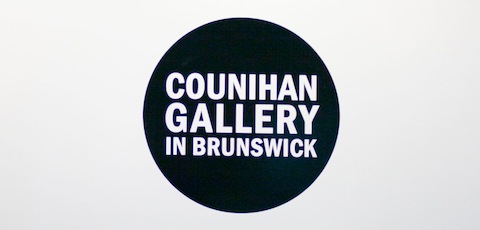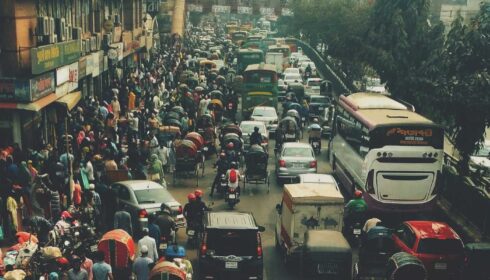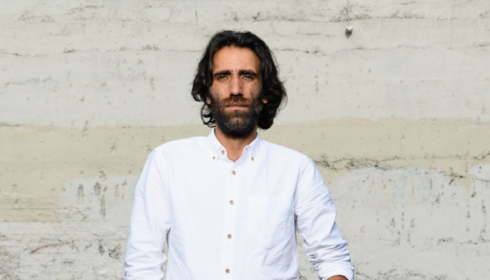
The Wave / What was taken and what was given | Counihan Gallery
Uncertainty.
That is what asylum seekers often feel when they leave their home country, seeking legal protection and asylum in Australia. Two current exhibitions at the Counihan Gallery in Brunswick seek to showcase this sentiment, express the complex emotions experienced by asylum seekers and consider the various voices surrounding this issue in Australia.
The Wave, by Liz Walker, includes a roughly two metre-long wooden boat sculpture made from 37,697 wooden sticks and a series of rectangular and opened briefcases stuck on a wall. Kelvin Skewes’ What Was Taken and What Was Given is a collection of photographs offering an insight into the island of Nauru where hundreds of asylum seekers attempting to get to Australia are held in mandatory detention.
The Plight of Asylum Seekers
Both exhibitions highlight the physical plight of asylum seekers on their journey to Australia.
Walker’s boat sculpture greets visitors at the entrance. The top of each stick is indented to depict a person with their head bowed, carrying nothing on their backs. The makeshift boat symbolises the perilous and exhausting journey taken by many asylum seekers to Australia today and in the past.
The positioning of the sculpture on the floor perpetuates the “Us” and “Them” dichotomy. Visitors essentially have their heads bowed down when they look upon the sculpture. This spatial metaphor reminds us that asylum seekers are quite often “different” from Australians.
Skewes’ collection depicts images of forests, the single bus schedule on Nauru and large trucks surrounding the detention centre, underlining the desolate life on the island. Looking at such surroundings gives a sense of the rejection and loneliness that asylum seekers might feel upon arrival here.
Mixed Messages
Walker’s exhibition showcases the positive and negative media coverage of the asylum seeker debate side-by-side. A newspaper advertisement of national campaign “You won’t be settled in Australia (without a visa)” is stuck on an opened briefcase, an advertisement similar to the recent “You Will Not Make Australia Home” campaign; nearby community newspaper articles explain how everyday Australians raise funds for asylum seekers.
Positive support for asylum seekers at an engaged grassroots level may not be enough to counter the lack of support from the general community. There is every chance asylum seekers will be granted asylum and given the chance to settle in Australia, but it is just as likely that they will not due to circumstances pertaining to residency beyond their control.
Skewes’ photos of collapsed phosphate cantilevers and a semi-disused phosphate factory on Nauru bring attention to the decline of phosphate mining and financial instability on the island in recent years. This begs question of whether the island will have sufficient resources in the long term to provide adequate living amenities and a stable housing environment for asylum seekers, despite aid received from Australia.
Assimilating and Calling Australia Home
Walker’s briefcase exhibit also features anecdotal accounts about settling down in Australia. For instance, Tri Nugyen recalls how Australians taught him English when he arrived from Vietnam as a kid. Today he is a pastor in Brunswick and helps asylum seekers in his church. Najaf Mazari tells of fleeing Afghanistan in order to escape persecution from Soviets, setting up his own rug business in Prahran and holding banquet dinners to raise money for his village back home. For some asylum seekers, the journey does not end when they successfully sustain a livelihood in Australia: there is also the journey to help others who are seeking asylum, a journey they are very willing to take.
In addition, domestic items such as intricately patterned cushions, joss sticks and shirts are also displayed within the briefcases. They are representative of items needed to set up homes and feel comfortable in this country for asylum seekers. Asylum seekers are real people, bringing with them real cultures and real stories to Australia.
Overall, Walker and Skewes’ exhibitions convey contrasting emotions and a cacophony of voices from different levels of the community on the subject of asylum seekers. More importantly, both give an insight into what it means to be an asylum seeker and some of the tribulations asylum seekers face in the process – and a potentially futile process at that – of calling Australia home.
The Wave and What was taken and what was given are on exhibition at Brunswick’s Counihan Gallery until 24 August 2014.



